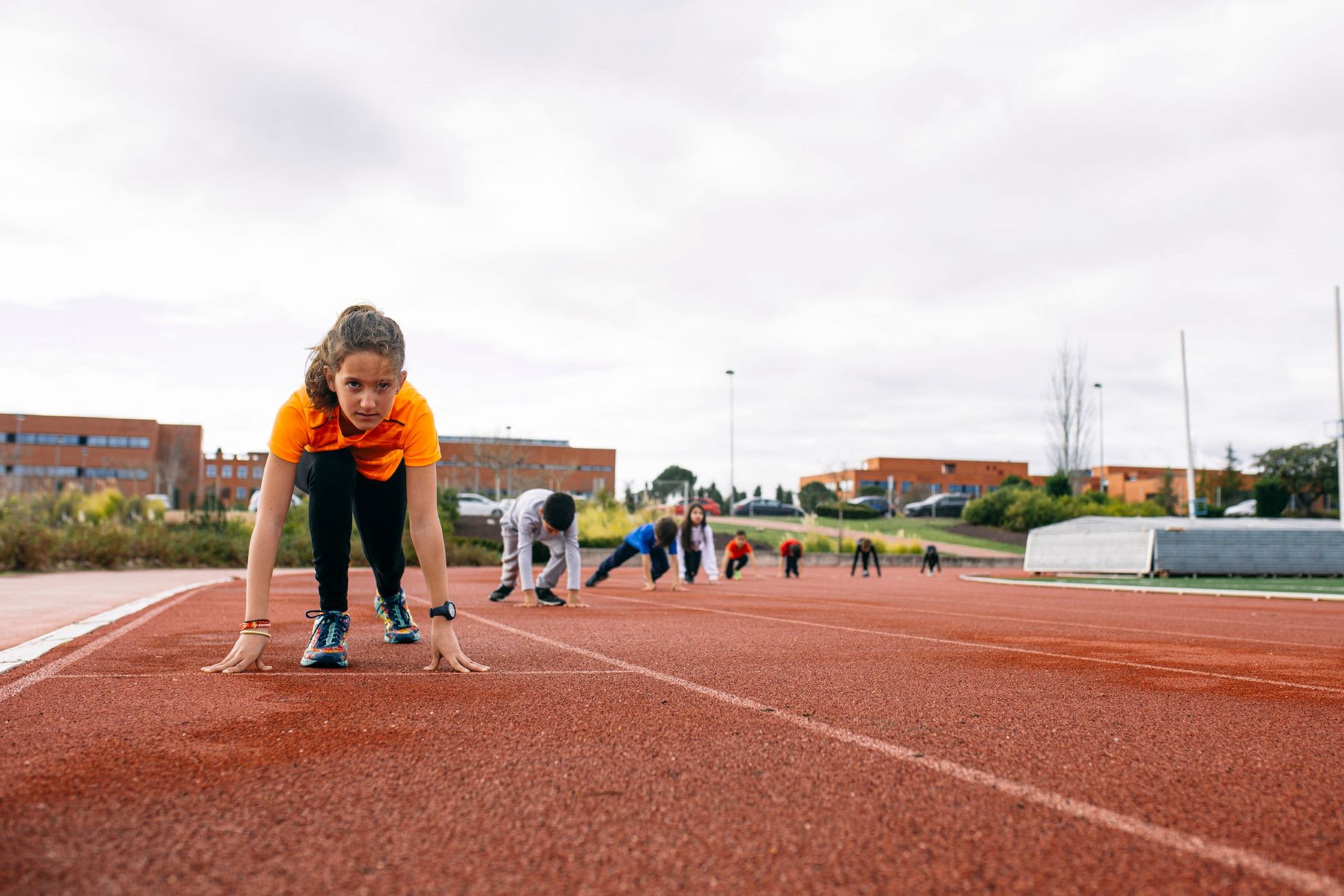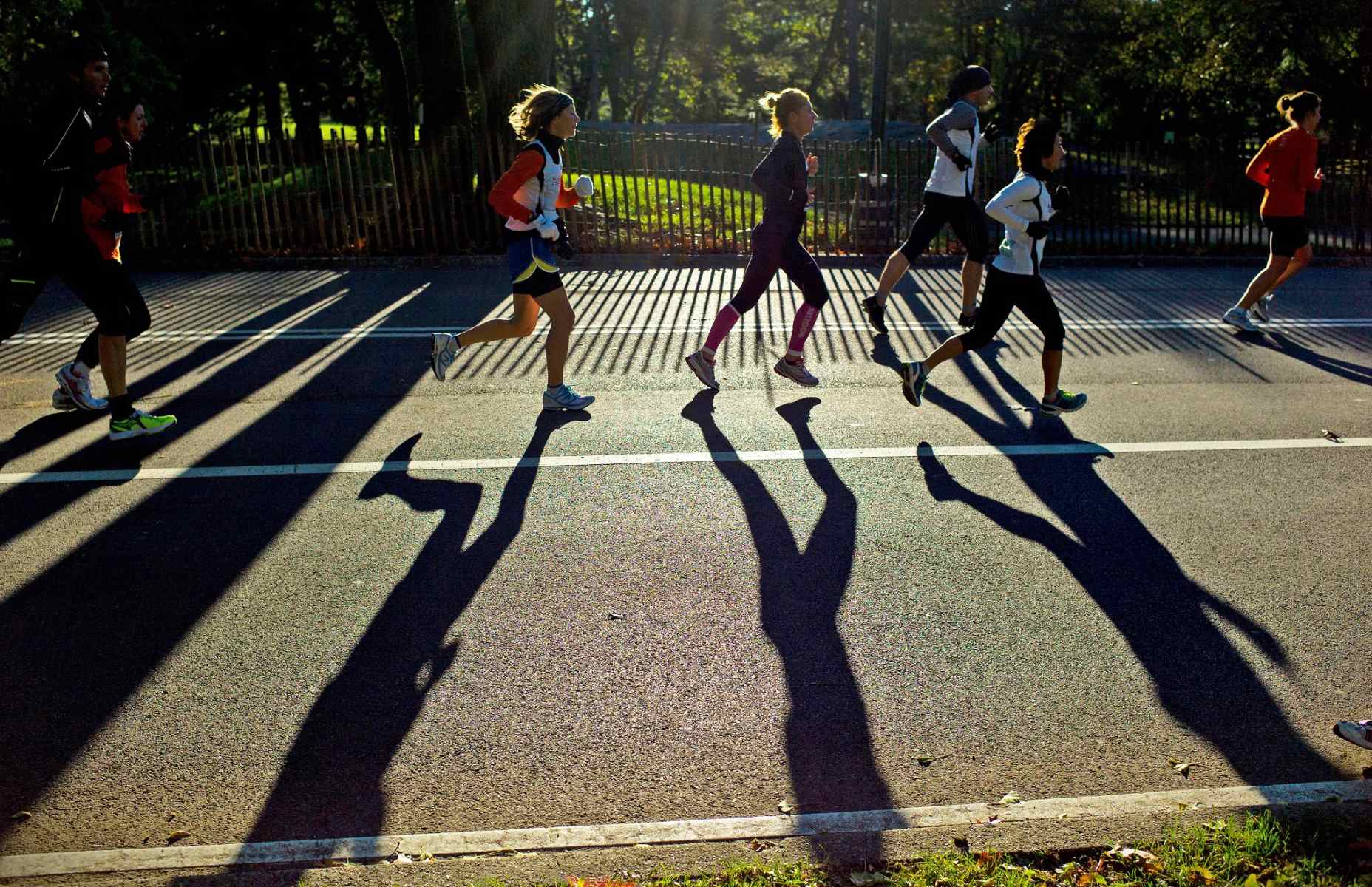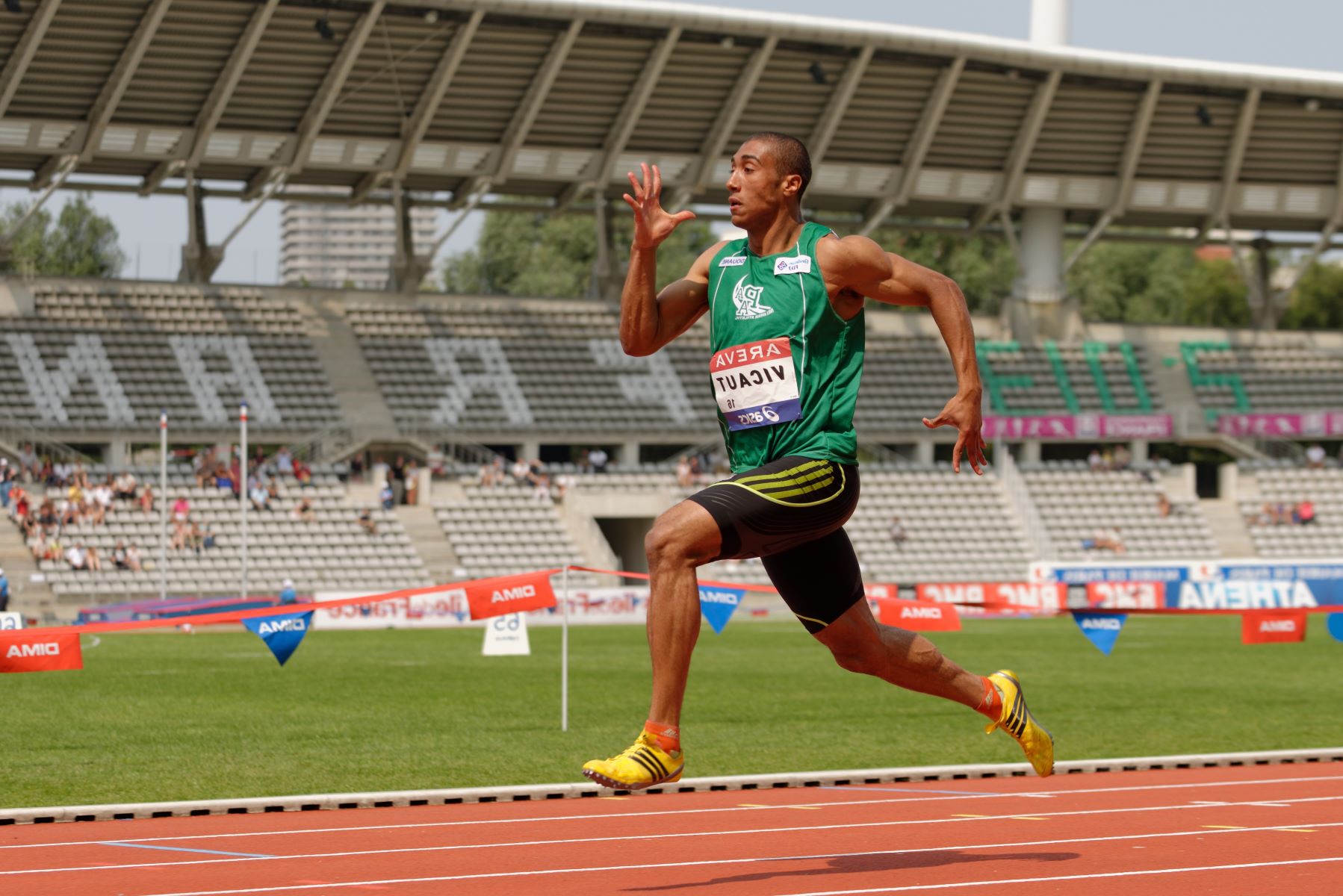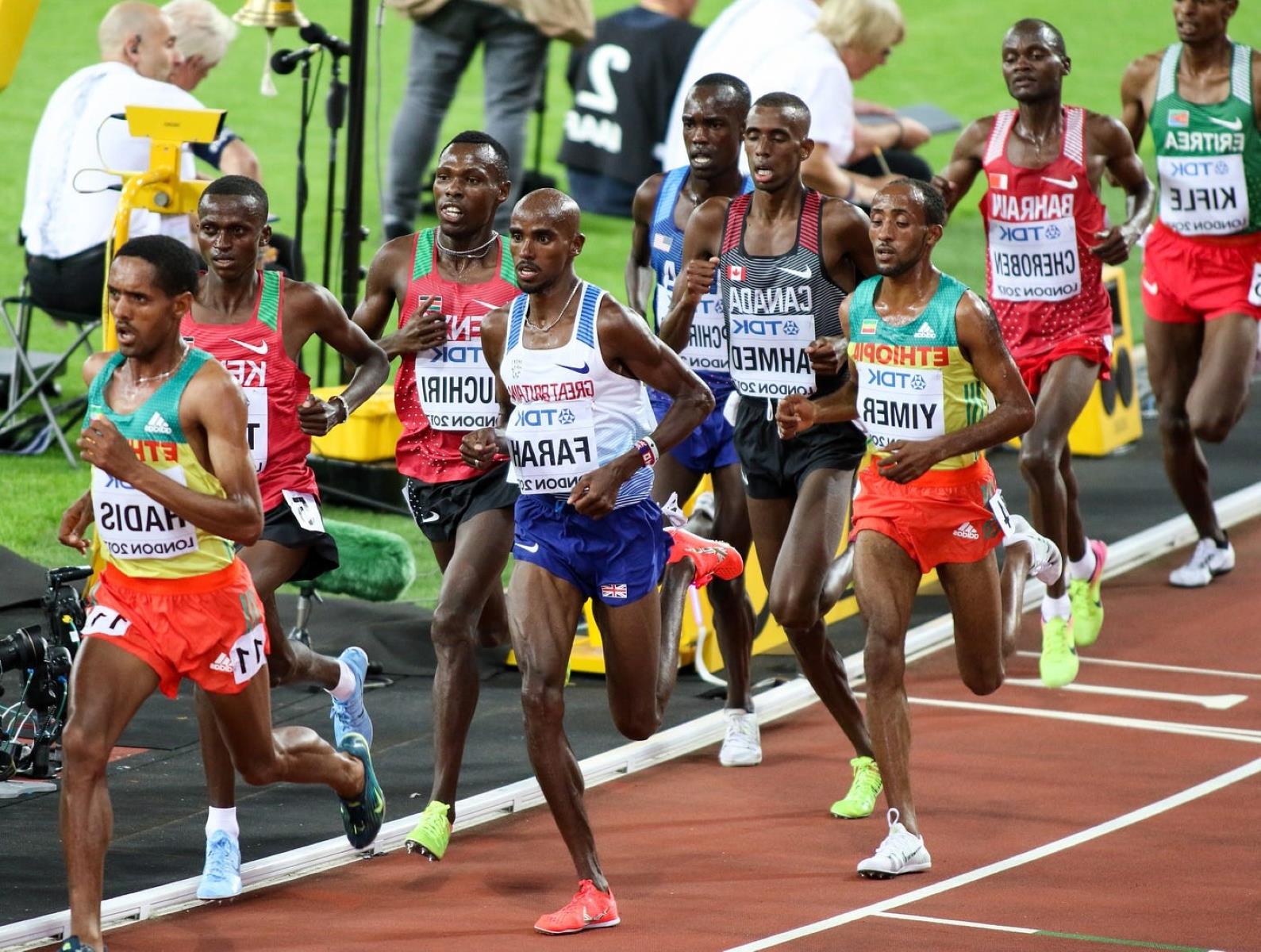Home>Community & Lifestyle>Family & Kids>What Is The Appropriate Distance For Children To Run?


Family & Kids
What Is The Appropriate Distance For Children To Run?
Published: February 23, 2024
Find the perfect running distance for kids and the whole family. Discover the ideal running distance for children to stay active and healthy. Explore family-friendly running tips and advice.
(Many of the links in this article redirect to a specific reviewed product. Your purchase of these products through affiliate links helps to generate commission for Therunningadvisor.com, at no extra cost. Learn more)
Table of Contents
- The Importance of Physical Activity for Children
- Factors to Consider When Determining Running Distance for Children
- Guidelines for Age-Appropriate Running Distances
- Potential Risks of Overexertion in Children
- Tips for Monitoring Children's Running Distance
- Incorporating Variety and Fun into Children's Running Activities
The Importance of Physical Activity for Children
Physical activity is crucial for the overall well-being and development of children. Engaging in regular exercise not only promotes physical health but also contributes to mental and emotional wellness. For children, physical activity is an essential component of a healthy lifestyle, fostering the development of strong muscles and bones, improving cardiovascular fitness, and enhancing coordination and balance.
Regular physical activity also plays a pivotal role in preventing childhood obesity, a prevalent concern in today's society. By encouraging children to engage in activities such as running, parents and caregivers can help them maintain a healthy weight and reduce the risk of developing obesity-related health issues.
Moreover, physical activity has been linked to improved cognitive function and academic performance in children. Regular exercise can enhance concentration, memory, and problem-solving skills, ultimately contributing to better academic outcomes. Additionally, participating in physical activities such as running can instill a sense of discipline, perseverance, and goal-setting in children, which are valuable life skills that can benefit them in various aspects of their lives.
Furthermore, engaging in physical activities provides children with opportunities to socialize, build friendships, and develop teamwork skills. Running, in particular, can be a fun and inclusive activity that allows children to bond with their peers while enjoying the outdoors. This fosters a sense of community and belonging, contributing to the overall social and emotional development of children.
In today's digital age, where sedentary activities often take precedence, it is crucial to emphasize the significance of physical activity for children. Encouraging them to participate in running and other forms of exercise not only promotes their physical health but also nurtures essential life skills and contributes to their overall well-being.
Read more: What Is Your Running Distance Limit?
Factors to Consider When Determining Running Distance for Children
When determining the appropriate running distance for children, several factors should be taken into account to ensure that their physical activity is both safe and beneficial. Understanding these factors can help parents, caregivers, and educators make informed decisions regarding children's running activities.
-
Age and Developmental Stage: The age and developmental stage of a child are crucial considerations when determining running distance. Younger children may have different physical capabilities and endurance levels compared to older children. It's important to tailor running distances to align with a child's age and stage of physical development. For example, preschool-aged children may engage in shorter bursts of running, while older children may gradually build up to longer distances as they develop greater stamina.
-
Physical Fitness and Health: Assessing a child's overall physical fitness and health is essential. Children with pre-existing health conditions or physical limitations may require modified running activities. Additionally, considering a child's fitness level can help determine an appropriate starting point for their running distance. It's important to gradually increase the distance as a child's fitness improves, ensuring that they are challenged without being overexerted.
-
Individual Preferences and Interests: Understanding a child's preferences and interests in physical activities can influence the approach to determining running distance. Some children may naturally enjoy running and have a higher tolerance for longer distances, while others may prefer shorter, more frequent bursts of activity. By considering individual preferences, caregivers can tailor running distances to align with a child's interests, making the activity more enjoyable and sustainable.
-
Environmental Factors: The environment in which children engage in running activities can impact the appropriate distance. Factors such as weather conditions, terrain, and access to safe running spaces should be taken into consideration. For example, running on uneven terrain may require shorter distances to account for the added physical exertion, while running in hot weather may necessitate frequent breaks and hydration to ensure safety and well-being.
-
Supervision and Safety Measures: The presence of adequate supervision and safety measures is paramount when determining running distance for children. Younger children may require closer supervision, especially when running longer distances, to ensure their safety and well-being. Additionally, implementing safety measures such as proper footwear, hydration, and warm-up exercises can contribute to a safe and enjoyable running experience for children.
By carefully considering these factors, caregivers and educators can tailor running distances to meet the individual needs and capabilities of children, promoting a safe, enjoyable, and beneficial physical activity experience.
Guidelines for Age-Appropriate Running Distances
Determining age-appropriate running distances for children is essential to ensure that their physical activity aligns with their developmental capabilities and promotes a positive experience. Tailoring running distances based on age-specific guidelines can contribute to the overall well-being and enjoyment of children's physical activity endeavors.
Preschool-Aged Children (Ages 3-5)
For preschool-aged children, running distances should be approached with a focus on short bursts of activity. Engaging in activities such as running short distances, such as 50 to 100 meters, can align with their developing motor skills and coordination. These short bursts of running can be integrated into playtime or structured activities, allowing young children to explore movement and physical exertion in a fun and engaging manner.
Early Childhood (Ages 6-8)
As children progress into the early childhood stage, they may demonstrate increased stamina and physical capabilities. Running distances for this age group can range from 200 to 400 meters, allowing them to gradually build endurance while engaging in age-appropriate physical activity. It is important to incorporate intervals of running and walking to prevent overexertion and promote sustainable participation in physical activity.
Middle Childhood (Ages 9-11)
Children in the middle childhood stage may exhibit enhanced physical fitness and endurance. Running distances for this age group can extend to approximately 800 meters to 1 kilometer, providing opportunities for them to challenge their physical capabilities while engaging in enjoyable running activities. Introducing structured running programs or games that involve longer distances can contribute to the development of cardiovascular fitness and overall physical well-being.
Adolescence (Ages 12-18)
As children transition into adolescence, their physical capabilities and endurance levels continue to evolve. Running distances for adolescents can vary based on individual fitness levels and interests. While some adolescents may thrive in longer-distance running activities, others may prefer shorter, high-intensity sprints. Tailoring running distances to align with individual preferences and capabilities can foster a positive and sustainable approach to physical activity during the adolescent years.
By adhering to age-appropriate running distance guidelines, caregivers and educators can support children in developing a positive relationship with physical activity while promoting their overall health and well-being. These guidelines serve as a framework for tailoring running distances to align with the unique developmental stages and capabilities of children, ultimately contributing to a fulfilling and enjoyable experience in engaging in running activities.
Potential Risks of Overexertion in Children
Overexertion in children, particularly during physical activities such as running, can pose significant risks to their health and well-being. It is essential for parents, caregivers, and educators to be mindful of these potential risks and take proactive measures to mitigate them. Understanding the consequences of overexertion can help create a safe and supportive environment for children's physical activity endeavors.
One of the primary risks associated with overexertion in children is the potential for physical injury. When children engage in prolonged or intense physical activity beyond their current capabilities, they may be susceptible to muscle strains, sprains, or even more severe injuries such as stress fractures. Overexertion can place excessive strain on developing muscles and bones, leading to overuse injuries that may hinder a child's ability to participate in physical activities in the future.
Moreover, overexertion can lead to dehydration and heat-related illnesses, especially when children engage in running activities in hot or humid conditions. Failure to maintain adequate hydration levels during prolonged physical exertion can result in dehydration, which can manifest in symptoms such as dizziness, fatigue, and heat exhaustion. In extreme cases, heatstroke, a potentially life-threatening condition, can occur if overexertion in high temperatures is not properly managed.
Another significant risk of overexertion in children is the potential impact on their emotional well-being. Pushing children beyond their physical limits during running activities can lead to feelings of frustration, inadequacy, and burnout. Overexertion may diminish the enjoyment of physical activity, leading to a negative association with running and exercise in general. This can have long-term implications for a child's attitude towards physical fitness and may deter them from engaging in regular exercise in the future.
Furthermore, overexertion can contribute to mental fatigue and emotional stress in children. Pressuring children to exceed their physical capabilities during running activities can lead to heightened stress levels and anxiety, particularly if they feel unable to meet unrealistic expectations. This can negatively impact their overall well-being and may result in reluctance to participate in physical activities due to fear of failure or discomfort.
To mitigate the risks of overexertion, it is crucial to implement strategies that promote safe and sustainable physical activity for children. This includes gradually increasing running distances based on individual capabilities, ensuring adequate hydration and rest periods during physical exertion, and fostering a supportive and encouraging environment that prioritizes the well-being of children above performance metrics.
By acknowledging the potential risks of overexertion and taking proactive measures to address them, parents, caregivers, and educators can create a nurturing and safe environment for children to engage in running activities, promoting their physical health and overall well-being.
Tips for Monitoring Children's Running Distance
Monitoring children's running distance is essential to ensure that their physical activity remains safe, enjoyable, and aligned with their individual capabilities. By implementing effective monitoring strategies, parents, caregivers, and educators can support children in their running endeavors while promoting a positive and sustainable approach to physical activity.
-
Utilize Technology: Embracing technology can aid in monitoring children's running distance. Wearable fitness trackers or smartphone apps equipped with GPS capabilities can provide real-time data on the distance covered during running activities. These tools offer insights into a child's performance and can help track progress over time, fostering a sense of accomplishment and motivation.
-
Establish Clear Milestones: Setting clear milestones for children's running distance can provide a structured framework for monitoring their progress. By defining achievable distance goals based on age and fitness level, caregivers can track and celebrate each milestone reached, reinforcing a sense of achievement and encouraging continued participation in running activities.
-
Observe Physical Responses: Paying attention to a child's physical responses during and after running activities is crucial for monitoring their distance. Observing signs of fatigue, discomfort, or excessive exertion can prompt adjustments to the running distance to ensure that it remains within safe and manageable limits for the child. Additionally, noting improvements in endurance and recovery can inform future distance adjustments.
-
Encourage Open Communication: Creating an environment where children feel comfortable communicating their experiences during running activities is vital. Encouraging open dialogue about how they feel during and after running, including any challenges or achievements, can provide valuable insights for monitoring their running distance. This open communication fosters trust and allows caregivers to make informed decisions regarding distance adjustments.
-
Implement Rest and Recovery Periods: Incorporating regular rest and recovery periods into children's running activities is essential for monitoring their distance. By scheduling breaks during longer runs and allowing adequate time for recovery between running sessions, caregivers can ensure that children are not overexerted and that their running distance aligns with safe and sustainable practices.
-
Consider Environmental Factors: Monitoring children's running distance involves considering environmental factors that may impact their performance and well-being. Factors such as weather conditions, terrain, and air quality can influence the appropriateness of running distances. Caregivers should adjust running distances based on these environmental considerations to prioritize the safety and comfort of the children.
-
Track Emotional Responses: Monitoring children's emotional responses to running activities is as important as tracking their physical performance. Observing their enthusiasm, enjoyment, or any signs of reluctance or distress can provide valuable insights into the appropriateness of the running distance. Adjusting distances based on emotional responses ensures that running activities remain positive and fulfilling experiences for children.
By implementing these monitoring tips, caregivers and educators can effectively oversee children's running distance, promoting a safe, enjoyable, and beneficial approach to physical activity. These strategies contribute to the overall well-being of children, fostering a positive relationship with running and exercise while prioritizing their safety and individual capabilities.
Incorporating Variety and Fun into Children's Running Activities
Introducing variety and infusing fun into children's running activities is essential for fostering a positive and engaging approach to physical fitness. By incorporating diverse elements and creating an enjoyable environment, caregivers and educators can enhance the overall running experience for children, promoting sustained participation and a lifelong appreciation for exercise.
1. Interactive Games and Challenges
Integrating interactive games and challenges into running activities can add an element of excitement and friendly competition. Incorporating activities such as relay races, obstacle courses, or scavenger hunts not only diversifies the running experience but also encourages teamwork and camaraderie among children. These engaging games can motivate children to actively participate in running activities while fostering a sense of enjoyment and accomplishment.
2. Themed Running Events
Organizing themed running events can captivate children's imagination and enthusiasm for physical activity. Whether it's a superhero-themed fun run or a nature-inspired trail run, incorporating themes into running activities adds an element of creativity and adventure. Children can dress up according to the theme, and the running route can be adorned with themed decorations, creating a memorable and immersive experience that ignites their passion for running.
3. Music and Dance Integration
Infusing music and dance into running activities can transform the exercise into a lively and rhythmic experience. Creating playlists of upbeat and energizing music can motivate children to move and groove while running. Additionally, incorporating dance breaks or choreographed routines along the running route adds an element of fun and spontaneity, making the activity more dynamic and enjoyable for children.
4. Exploratory Nature Runs
Taking running activities outdoors and exploring natural surroundings can instill a sense of adventure and curiosity in children. Designing running routes that lead to scenic spots, parks, or nature trails allows children to connect with the environment while engaging in physical activity. Encouraging them to observe and appreciate the natural world during their runs adds an educational and enriching dimension to the activity, making it both fun and enlightening.
5. Playful Challenges and Rewards
Incorporating playful challenges and rewards into running activities can incentivize children and make the experience more gratifying. Setting up mini-challenges along the running route, such as hopping over obstacles or sprinting to designated markers, adds an element of playfulness and excitement. Additionally, rewarding children with small tokens of achievement or recognition upon completing running milestones can reinforce their sense of accomplishment and motivate them to continue participating enthusiastically.
By incorporating these diverse and engaging elements into children's running activities, caregivers and educators can create a vibrant and enjoyable environment that promotes sustained participation and a positive attitude towards physical fitness. Infusing variety and fun into running activities not only enhances the overall experience but also nurtures a lifelong appreciation for the benefits of regular exercise.













